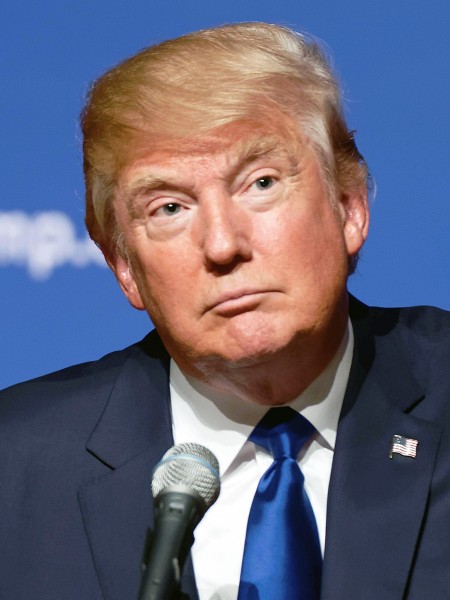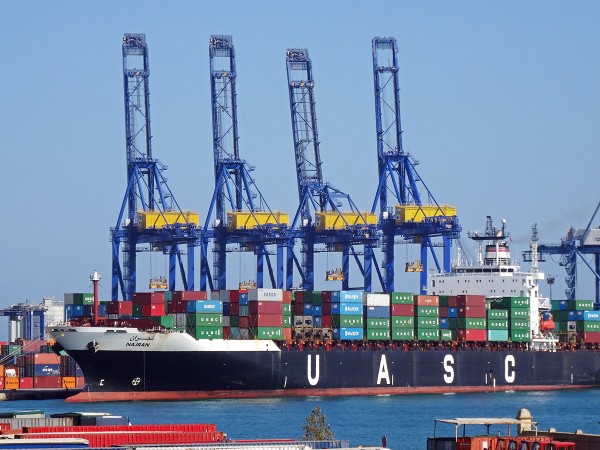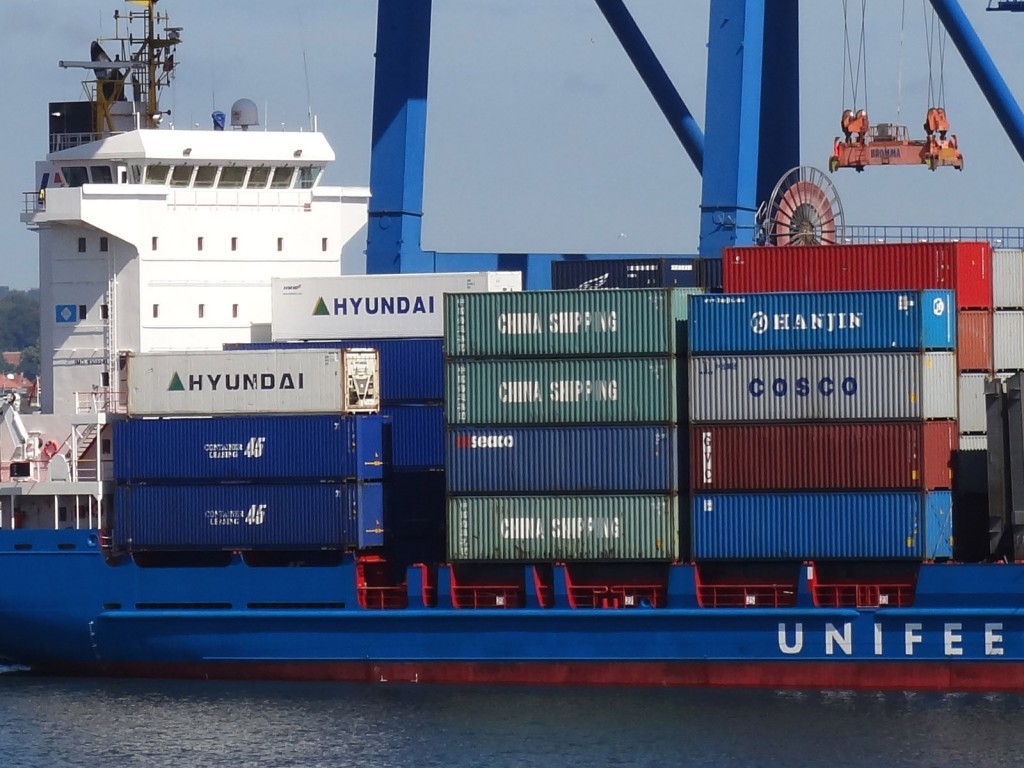Trump and trade
 President-elect Donald Trump has blamed free trade for much of America’s economic problems. He argues that cheap imports from China, partly from an undervalued yuan, have led to a loss of jobs and to large-scale income flows from the USA to China. “They have taken our jobs; they have taken our money; and on top of that they have loaned the money to us and we actually pay them interest now on money,” he claimed to The Economist.
President-elect Donald Trump has blamed free trade for much of America’s economic problems. He argues that cheap imports from China, partly from an undervalued yuan, have led to a loss of jobs and to large-scale income flows from the USA to China. “They have taken our jobs; they have taken our money; and on top of that they have loaned the money to us and we actually pay them interest now on money,” he claimed to The Economist.
And it’s not just trade with China that he criticises. He sees cheap imports from developing countries generally as undermining US jobs. The solution he advocates is the imposition of tariffs on imports that threaten US jobs and scrapping, or fundamentally renegotiating, trade deals.
He refers to NAFTA – the North American Free Trade Agreement with Canada and Mexico – as the worst trade deal in US history and blames it for the loss of thousands of US manufacturing jobs. He has said that he will demand better terms from Mexico and Canada. If they don’t agree to them, he’d pull the USA out of NAFTA altogether.
A more recent trade agreement is the Trans-Pacific Partnership (TPP) with 11 other Pacific rim countries (but not including China). The agreement was signed on 4 February 2016, but is awaiting ratification from member countries. Amongst other things, the agreement cuts over 18,000 tariffs. Donald Trump has said that he would block the deal, even though it would lead to the elimination of tariffs on most US manufactured and agricultural products exported to the other countries. He argues that it would lead to a large-scale loss of US jobs from cheap imports.
 Another major trade deal criticised by Trump is that being negotiated between the USA and the EU – the Transatlantic Trade and Investment Partnership (TTIP). It has already faced fierce opposition in Europe, with many fearing that it would give too much power to US corporations in their operations in Europe. With the opposition from Trump, it looks unlikely that the agreement will be signed, even in an amended form.
Another major trade deal criticised by Trump is that being negotiated between the USA and the EU – the Transatlantic Trade and Investment Partnership (TTIP). It has already faced fierce opposition in Europe, with many fearing that it would give too much power to US corporations in their operations in Europe. With the opposition from Trump, it looks unlikely that the agreement will be signed, even in an amended form.
So is this more protectionist stance by Donald Trump in America’s interests? The main argument against restricting imports is that people generally in the USA would be poorer. This is the prediction from the law of comparative advantage. Trade allows a country to consume beyond its production possibility curve by specialising in the production of goods with relatively low opportunity costs and importing goods which would have had a higher opportunity cost if they were produced domestically (see, for example, Economics, 9th edition, pages 711–4). By imposing tariffs or other restrictions on cheap imports, consumers would end up paying more for such goods if they now have to be produced domestically. Cheap Chinese t-shirts would be replaced by expensive US ones. Real US incomes would be lower.
Another danger of pursuing protectionist policies is that other countries might retaliate. Trade wars might result, with the world ending up poorer.
Then there is a problem of locating products. It is not a simple question of saying a product is made in the USA or elsewhere. With complex modern supply chains, many products use components and services, such as design and logistics, from many different countries. Imposing restrictions on imports may lead to damage to products which are seen as US products.
 An open trade policy, by contrast, not only leads to higher consumption, it stimulates economic growth and the extra competition it creates improves domestic productivity. As the pro-free trade article by Graeme Leach, linked below, argues:
An open trade policy, by contrast, not only leads to higher consumption, it stimulates economic growth and the extra competition it creates improves domestic productivity. As the pro-free trade article by Graeme Leach, linked below, argues:
There is overwhelming evidence that free trade improves economic performance by increasing competition in the domestic market. Trade disciplines domestic firms with market power, and simultaneously promotes productivity growth. Research also shows that a 10 per cent increase in trade leads to a 5 per cent increase in per capita income. More open trade policies are associated with higher per capita incomes.
And as the article by Clark Packard argues:
There is no question that America’s middle and lower classes have benefited from our trade liberalization. Through the widely accepted principle of comparative advantage in our trade policies, productivity has surged and prices have declined. Lower prices save the average American family thousands of dollars a year on goods they consume, raising the standard of living through enhanced purchasing power.
Despite these arguments, there is one crucial problem with free trade. Although overall levels of consumption may be higher, trade may make some people poorer. If workers in the US steel or garment industries lose their jobs because of cheap imports, they will certainly feel worse off, especially if there is no prospect of them getting another job elsewhere. They may lack transferable skills or have too many family or personal ties to move elsewhere in the country.
The government could help to ameliorate the problems of those made unemployed by providing retraining or resettlement grants or by investing in infrastructure projects that require relatively low skilled, but local, construction workers. But, as the Forbes article states:
It is in helping displaced workers of all types that US government, as well as the leaders of other rich countries, have largely failed. Little has been done to assist laid-off workers whose industries simply cannot compete in developed countries anymore.
What is more, inequality has been growing in the USA, and in most other developed countries too.  International trade and investment and the growing concentration of power in large corporations has meant that most of the gains from trade have gone to the richest people. Many of the poor blame trade for their plight and the argument that they have still made some gains is either not believed or is not enough to appease them.
International trade and investment and the growing concentration of power in large corporations has meant that most of the gains from trade have gone to the richest people. Many of the poor blame trade for their plight and the argument that they have still made some gains is either not believed or is not enough to appease them.
An interesting insight into why people may have voted for Trump and his policy of protectionism is provided by the Ultimatum Game (see also). As the final article below explains:
The game itself involves two players. The first player receives a sum of money, and gets to propose how to divide it between the two players. The second player can do only one thing: accept or reject the proposal. If the second player accepts, then the money is divided between the two players as proposed. But if the second player rejects the proposal, then neither player gets anything.
It might seem that the rational thing for the second person to do is to accept whatever the first person proposes, however little it gives to the second person providing it is something – after all, even a little is better than nothing. But experiments show that people playing the second person do not behave in that way. They seek a fair distribution. If the proposed distribution is perceived as unfair, they would prefer to reject the proposal, with both players getting nothing.
This may help to explain the psychology of poor blue-collar workers. They would rather punish the rich a lot, and possibly themselves a little, than let the rich continue getting richer while they are stuck on low wages with little prospect for improvement. But, of course, they may also believe Trump’s rhetoric that they will indeed be better off from protectionist policies that help save their jobs.
What precisely Donald Trump will do about trade agreements and protection, we will have to wait and see. Often what is pledged in an election campaign is not carried out in office or is substantially watered down.
Articles
How Donald Trump thinks about trade The Economist (9/11/16)
What President Trump’s victory means for the most important trade deal in the world Independent, James Moore (9/11/16)
Trump and trade: A radical agenda? BBC News, Ben Morris (9/11/16)
Trump could change trade stance, says former Bush adviser BBC News, Tom Espiner (11/11/16)
3 Ways President-Elect Trump May Shake Up Trade Policy NPR, Marilyn Geewax (9/11/16)
Donald Trump Win to Upend Trade Policy Nasdaq, William Mauldin and John Lyons (9/11/16)
Stiglitz Grades Donald Trump an F on Economics Bloomberg, Enda Curran and Angie Lau (19/9/16)
Trump can kill trade deals but he can’t kill globalisation The Conversation, Remy Davison (10/11/16)
Anti-free trader Donald Trump is on a collision course with economic reality City A.M., Graeme Leach (9/11/16)
What Trump And Clinton Both Get Wrong On Trade Forbes, Simon Constable (4/11/16)
The Rabble Understands Trade Pretty Well Huffington Post, Brad Miller (4/11/16)
Contrary to Donald Trump’s claims, free trade benefits the poorest Americans U.S.News, Clark Packard (27/10/16)
The Meaning of Open Trade and Open Borders The New Yorker, Bernard Avishai (17/10/16)
We just saw what voters do when they feel screwed. Here’s the economic theory of why they do it. Quartz, James Allworth (9/11/16)
Questions
- Use a simple two-product production possibility diagram to demonstrate the possible consumption gains to a country from trading with another country and specialising in exporting the good in which it has a comparative advantage.
- Search Donald Trump’s speeches to identify statements he has made about the trade policies he will pursue as president.
- Explain why some people may gain more from free trade than others. Why do the people who have gained the most tend to be the richest people?
- What are the arguments for and against the free movement of labour (a) within countries; (b) between countries?
- Compare the relative benefits and costs of tariffs and various forms of administrative constraints on trade.
- If the second player in the ultimatum game rejects an ‘unfair’ offer, should this behaviour be described as ‘irrational? Explain.
- Find out the details of the Trans-Pacific Partnership agreement. In what ways, other than through increased trade, would the agreement benefit the residents of the member countries?
- Does free trade threaten employment in the long term? Explain.
